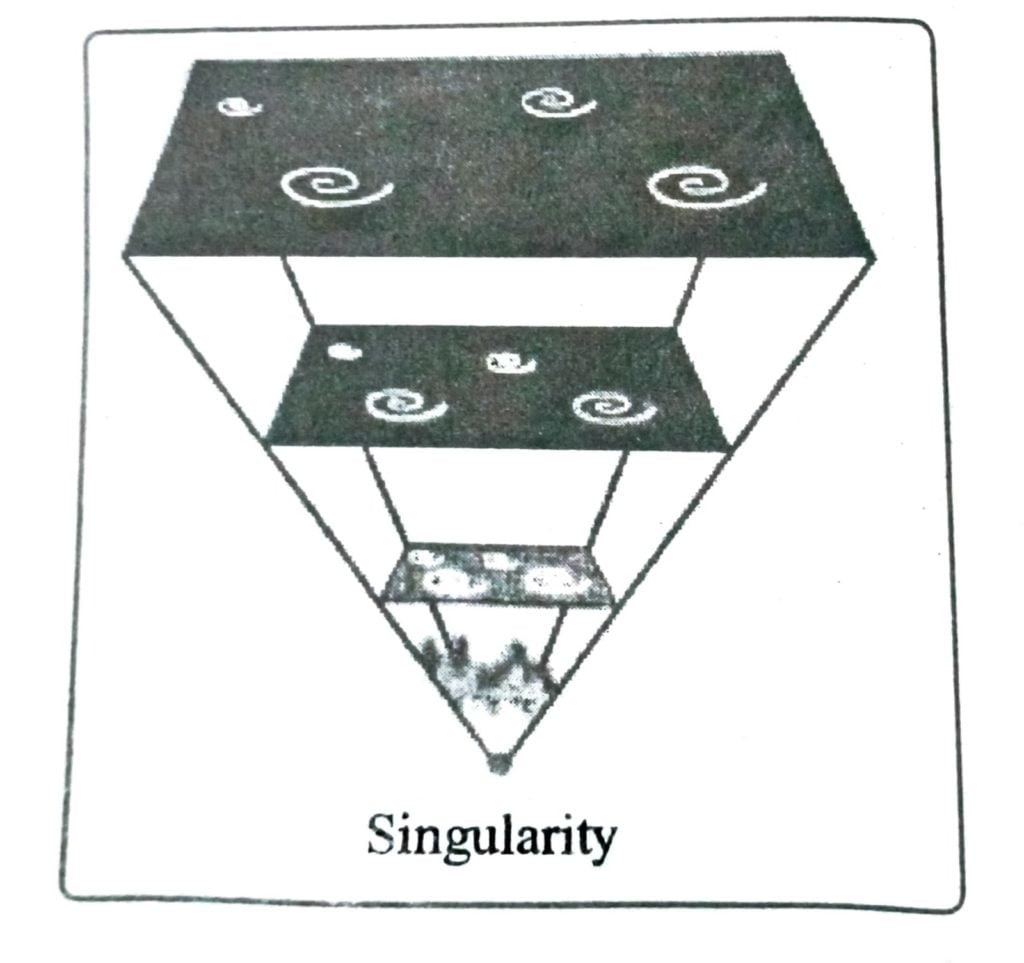Class 11 Geography Chapter 2 The Origin and Evolution of the Earth The answer to each chapter is provided in the list so that you can easily browse throughout different chapters SCERT Class 11 Geography Chapter 2 The Origin and Evolution of the Earth and select need one.
Class 11 Geography Chapter 2 The Origin and Evolution of the Earth
Also, you can read the SCERT book online in these sections Solutions by Expert Teachers as per SCERT (CBSE) Book guidelines. These solutions are part of SCERT All Subject Solutions. Here we have given Assam Board/NCERT Class 11 Geography Chapter 2 The Origin and Evolution of the Earth Solutions for All Subject, You can practice these here…
The Origin and Evolution of the Earth
Chapter: 2
PART-1
GEOGRAPHY
TEXTUAL QUESTION & ANSWER
(a) Multiple choice questions.
Q.1. Which one of the following figures represents the age of the earth?
(i) 4. 6million years
(ii) 13.7billion years
(iii) 4.6billion years
(iv) 13.7trillio years
Ans: (iii) 4.6billion years
Q.2. Which one of the following has the longest duration?
(i) Era
(ii) Eons
(iii) Degrading
(iv) photosynthesis
Ans:(ii) Eons
Q.3. Which one of the following is not related to the formation of modification of the present atmosphere?
(i) solar winds
(ii) Differentiation
(iii) Degrassing
(iv) Photosynthesis
Ans: (ii) Differentiation
Q.4.Which one of the following represents the inner planets?
(i) planets between the sun and the earth
(ii) planets between the sun and the belt of asteroids
(iii) planets in gaseous state
(iv) planets without satellite (s)
Ans: (ii) planets between the sun and the belt of asteroid
Q.5. Life on the earth appeared around how many years before the present ?
(i) 13.7 billion
(ii) 3.8 million
(iii) 4.6 billion
(iv) 3.8 billion
Ans: (ii) 3.8 million
(b) Answer the following questions in about 30 words:
Q.1.why are the terrestrial planets rocky?
Ans: Mercury,Venus, Earth and Mars are known as terrestrial planets. They are earth like and made up of rocks. Because of the very close Location of these planets the solar winds were most intense , it blew off lots of gas and dust from these planets. As a result they become rocky on their surface.
Q.2.What is the basic difference in the arguments related to the origin of the earth given by-
(a)Kant and Laplace
(b) Chamberlain and Moulton
Ans:(a) Regarding the origin of the earth,the German philosopher Immanuel Kant, considered that the planets were formed out of a cloud of material associated with s youthful sun which was slowly rotating . This theory was supported by Laplace . The name of their theory is known as Nebular Hypothesis (1796).
(b) In 1900, Chamberlain and Moulton considered that a wandering star approached the present sun. As a result a cigar shaped extension of material was separated from the solar surface and continued to revolve around the sun and it slowly condensed into planets .
Q.3.What do you mean by the process of differentiation?
Ans: The earth was mostly in a volatile stage during its primordial stage. Due to gradual increase in density,the temperature inside has increased. As a result the material inside started getting separate depending on their densities. Thus,the heavier materials sink towards the centre of the earth and the lighter ones move towards the surface. Now ,we can say that by which the earth material got separated into different layers according to their densities is called the process of differentiation.
Q.4.What was the nature of the earth’s surface initially?
Ans: Initially the nature of the earth surface was a barren rocky and hot object with a thin atmosphere of hydrogen and helium. Which were far from the present day picture of the earth. Now we have ample amounts of water and a conductive atmosphere favouring the existence of life.
Q.5.What were the gases which initially formed the earth’s atmosphere?
Ans: Like the present day atmosphere of the earth the initial atmosphere was different. Initially the earth was formed with hydrogen and helium gases. But in later periods they have been stripped off as a result of the solar winds.
| Sl. No. | CONTENTS |
| Chapter 1 | Geography As A Discipline |
| Chapter 2 | The Origin and Evolution of the Earth |
| Chapter 3 | Interior of the Earth |
| Chapter 4 | Distribution of Oceans And Continents |
| Chapter 5 | Minerals and Rocks |
| Chapter 6 | Geomorphic Processes |
| Chapter 7 | Landforms and Their Evolution |
| Chapter 8 | Composition and Structure of Atmosphere |
| Chapter 9 | Solar Radiation, Heat balance, and Temperature |
| Chapter 10 | Atmospheric Circulation and Weather Systems |
| Chapter 11 | Water in the Atmosphere |
| Chapter 12 | World Climate and Climate Change |
| Chapter 13 | Water (Oceans) |
| Chapter 14 | Movements of Ocean Water |
| Chapter 15 | Life on the Earth |
| Chapter 16 | Biodiversity And Conservation |
| Chapter 17 | Indian Location |
| Chapter 18 | Structure and Physiography |
| Chapter 19 | Drainage System |
| Chapter 20 | Climate |
| Chapter 21 | Natural Vegetation |
| Chapter 22 | Soils |
| Chapter 23 | Natural Hazards and Disasters |
(c) Answer the following questions in about 150 words:
Q.1.Write an explanatory note on the ‘Big Bang Theory’.
Ans: Among the various modern theories regarding the origin of the earth or the universe, the ‘Big Bang Theory’ is a most popular theory. It was forwarded by Edwin Hubble in 1920. This theory is also known as ‘expanding universe hypothesis’.The theory considers the following three stages in the development of the universe.
Stage-1: In the beginning all matter forming the universe existed in one place in the form of a ‘tiny ball’ (singular atom) with an unimaginably small volume infinite temperature and infinite density.
Stage-2: In the second stage, the ‘tiny ball’ explodes violently. This led to a huge expansion. According to the theory, the expansion continues even to the present day. As the size increased some energy was converted into matter. A rapid expansion starts within the fractions of a second after the bang and after that the expansion has slowed down. The first atom began to formed within the first three minutes from the Big Bang event.( Fig-1)

Stage-3: Within 300000 years from the Big Bang temperature dropped to 4,500k and gave rise to atomic matter. The universe became transparent.
Q.2.List the stages in the evolution of the earth and explain each stage in brief.
Ans: The various stages in the evolution of the evolution of the earth are given below:
Stage-1: In this stage of earth’s evolution, the earth was originated by planetesimals accretion. In this time the earth was a barren, rocky and hot object with thin atmosphere of hydrogen and helium,
Stage-2: Formation of Lithosphere: In this stage the earth was mostly in a volatile state. Gradually the density of the earth’s matter increased which led to the temperature inside the earth starting getting separated depending on their densities. With passage of time it cooled further and solidified and condensed into a smaller size. This later led to the development of the outer surface in the form of a crust.
Stage-3: Formation of atmosphere: In the formation of earth’s atmosphere the following three stages were identified.
(1) The first stage is marked by the loss of primordial atmosphere.
(2)the hot interior of the earth contributed to the evolution of the atmosphere and.
(3) thirdly the composition of the atmosphere was modified by the living world through the process of photosynthesis.
During the cooling of the earth, gases and water vapour were released from the interior solid earth. This started the evolution of the present atmosphere.
Stage-4: Formation of hydrogen: Continuous volcanic eruptions contributed water vapour and gases to the atmosphere. As the earth cooled the water vapour released started getting condensed. The carbon-dioxide in the atmosphere got dissolved in rainwater and the temperature further decreased causing more condensation and more rains. And thus the hydrosphere was formed over the earth’s surface.

Hi, I’m Dev Kirtonia, Founder & CEO of Dev Library. A website that provides all SCERT, NCERT 3 to 12, and BA, B.com, B.Sc, and Computer Science with Post Graduate Notes & Suggestions, Novel, eBooks, Biography, Quotes, Study Materials, and more.


